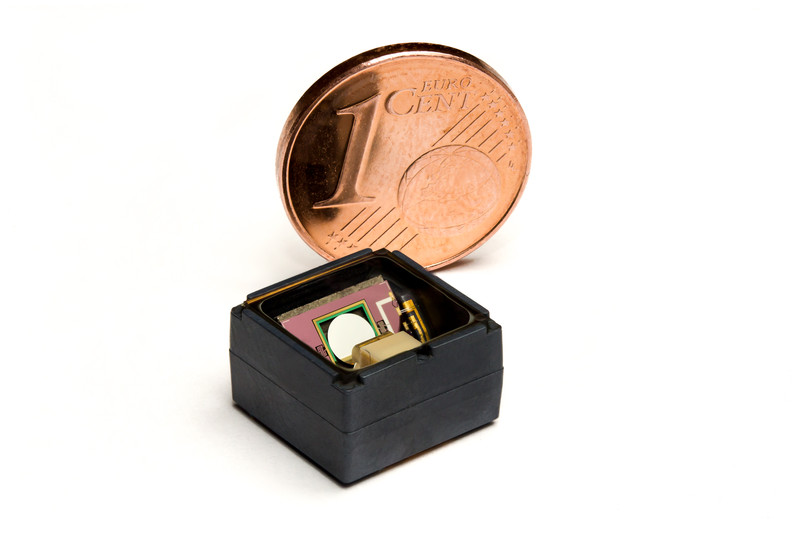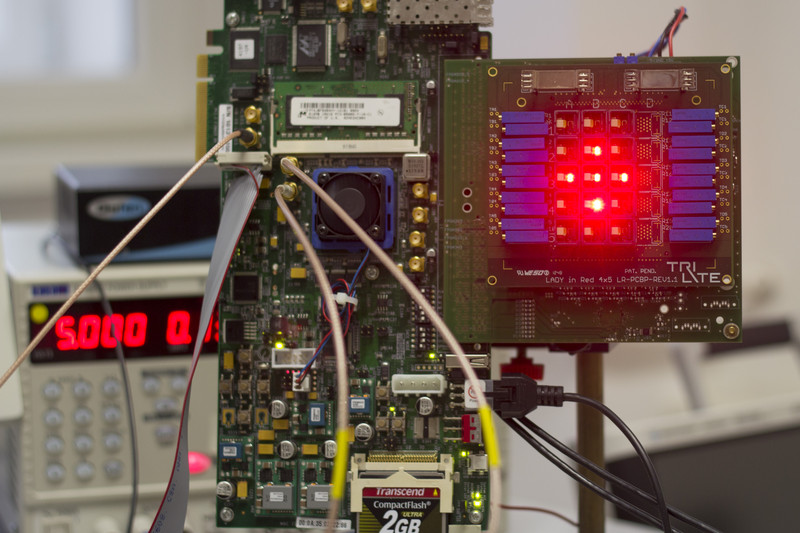Scientists from Austria have developed a sophisticated laser system that allows users to enjoy a three-dimensional visual display without having to wear special glasses.

The display uses laser beams to send different pictures in different directions. Each individual pixel contains lasers and a moving mirror to direct the laser light (they’re referred to as a “trixel” and are pictured below). This allows for different pictures to be sent to the right eye and the left eye of the view, thereby creating a 3D effect.

A prototype has already been built and demonstrated as functional; the technology is expected to become available in 2016.
So, that’s the short story. Regarding the background on how the group got to this point, you’d have to go back to 2013, when start-up company TriLite Technologies first conceptualized a new kind of display that sent light directly to the viewer’s eyes.
As the project moved further, researchers from the Vienna University of Technology were brought in, and together the two groups created the prototype pictured below.

Now, it should be noted that the prototype has a modest resolution of just five pixels by three, but more importantly, it demonstrates the fact that a system designed as such does work.
“We are creating a second prototype, which will display color pictures with a higher resolution. But the crucial point is that the individual laser pixels work. Scaling it up to a display with many pixels is not a problem”, says Jörg Reitterer of TriLite Technologies, who is also a Ph.D. student studying under Professor Ulrich Schmid at the Vienna University of Technology.
“The mirror directs the laser beams across the field of vision, from left to right. During that movement the laser intensity is modulated so that different laser flashes are sent into different directions,” Schmid explains.
In order to experience the visual effect, the viewer must be positioned a certain distance range from the screen. If that space is too large, both eyes receive the same image and he / she will see a normal 2D picture. The range for the 3D effects can be tuned according to local requirements.
Comparing this new system to its predecessor, 3D movies in the theaters nowadays show two different pictures — one for each eye. The new system will hit the viewer with hundreds of pictures from all different angles so that when they walk by a display employing this system, the visual object can be seen from different sides, almost as if passing by the actual, physical object.
Now, in order for this technology to be used on an action display (as opposed to static imagery), a new video format will be required. Fortunately, the researchers realized this, and already developed one.
“Today's 3D cinema movies can be converted into our 3D format, but we expect that new footage will be created especially for our displays — perhaps with a much larger number of cameras,” says Franz Fiedler, CTO of TriLite Technologies.
An obvious question about a system designed like this is how good is the quality of picture? According the researchers, it’s very vivid; so much so that it can be used outdoors and in bright sunlight. This sort of capability broadens the technology’s use beyond the cinema screen, and makes it appealing to advertisers that are using outdoor, electronic billboards.
“Maybe someone wants to appeal specifically to the customers leaving the shop across the street, and a different ad is shown to the people waiting at the bus stop,” says Ferdinand Saint-Julien, CEO of TriLite Technologies. From a technological standpoint, it’s now doable with this system.
According to the group, the technology is fully patented and has been published in several scientific publications. A second prototype is due middle of this year, and as mentioned earlier, the commercial launch is set for 2016.
Advertisement
Learn more about Electronic Products Magazine





